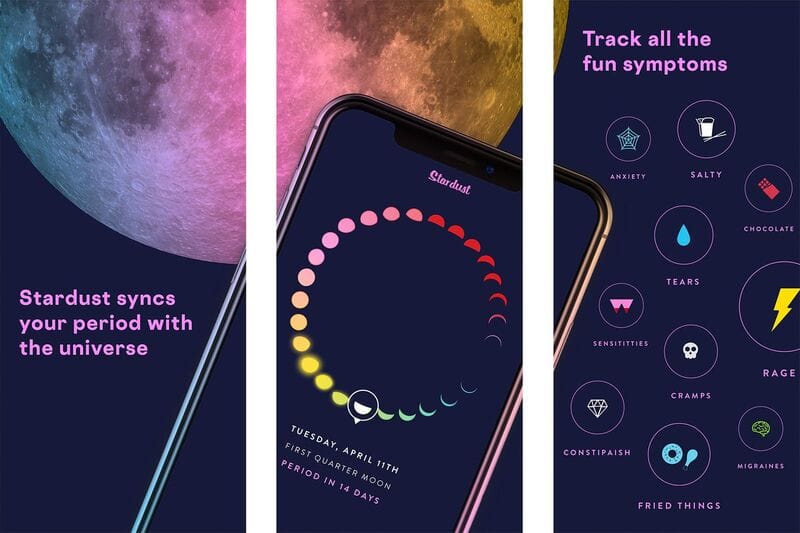Natural Contraception: a Guide to Fertility awareness

In an era where awareness and concern over the body's natural processes are at an all-time high, many individuals are seeking alternatives to hormonal and artificial contraception methods. Natural contraception offers a way to understand and work with the body's natural rhythms to prevent pregnancy, avoiding the side effects associated with hormonal birth control. This post delves into the world of natural contraception, exploring various methods, their effectiveness, and important considerations for those looking to make an informed choice about their reproductive health.
I discovered the concept of natural contraception amidst the abortion debate in the US. Unlike many, the holistic women I followed, such as Kim Anami, were not enraged by what was driving protests across the country. Instead, they advocated for taking responsibility for our cycles and ceasing to outsource these natural processes. Inspired by this perspective, I began using the calendar method after the birth of my second daughter. A year into this practice, my satisfaction and appreciation for it have only grown. The knowledge I've gained about my body and menstrual cycle is invaluable; it astonishes me that I lived until the age of 36 in complete ignorance of these processes. Now, I can not only predict but also understand my moods, desires, and appetites with clarity.

Understanding Natural Contraception
Natural contraception, often referred to as fertility awareness-based methods (FABMs), involves tracking the body's natural fertility signals to avoid pregnancy. Unlike hormonal birth control that alters the body's natural cycles, natural contraception requires a deep understanding and observation of one's menstrual cycle and signs of fertility. By identifying the days when fertility is highest, individuals or couples can abstain from intercourse or use barrier methods during this window to prevent pregnancy.
When can you get pregnant?

Understanding the timing of pregnancy involves knowing the fertile window during a woman's menstrual cycle. A woman is most likely to get pregnant during ovulation, when an egg is released from the ovary and is available to be fertilized by sperm. Ovulation typically occurs about 14 days before the start of the next menstrual period, though this can vary greatly among individuals and even from month to month.
The fertile window is generally considered to be about six days: the five days leading up to ovulation and the day of ovulation itself, because sperm can live inside the female reproductive tract for up to five days and the egg can survive for about 24 hours after being released. Outside of this fertile window, the chances of getting pregnant are significantly lower, but not impossible, due to the variability in timing of ovulation. It's important to remember that menstrual cycles can vary, making it challenging to predict the exact timing of ovulation without careful tracking of cycle signs, such as basal body temperature and cervical mucus changes.
Types of Natural Contraception Methods

Natural contraception encompasses several methods, each relying on different indicators of fertility. Understanding each method's basics, how they work, and their effectiveness is crucial for anyone considering this path.
Calendar/Rhythm Method
The Calendar or Rhythm Method involves tracking menstrual cycles over several months to predict future fertile windows. By calculating the length of past cycles, individuals can estimate the ovulation period, during which they should abstain or use barrier methods. This method requires regular cycles and diligent record-keeping to be effective.
Basal Body Temperature Method
This method requires monitoring one's body temperature at rest (basal body temperature) daily. After ovulation, a slight but noticeable rise in temperature occurs, indicating a decrease in fertility. By charting these temperatures over time, it's possible to predict fertile days. Accuracy and consistency in taking measurements are key to the effectiveness of this method.
Cervical Mucus Method (Billings Ovulation Method)
The cervical mucus method involves observing changes in cervical mucus throughout the menstrual cycle. Just before ovulation, mucus becomes clear, stretchy, and more copious, signaling increased fertility. By avoiding intercourse during these changes, pregnancy can be prevented.
Withdrawal Method (Coitus Interruptus)
Though not exclusively a natural method, withdrawal involves removing the penis from the vagina before ejaculation to prevent sperm from entering the uterus. While simple, its effectiveness significantly depends on the male partner's control and timing.
Lactational Amenorrhea Method (LAM)
LAM is based on the natural postpartum infertility that occurs when a woman is exclusively breastfeeding. It can be effective for up to six months after birth, provided that menstruation has not resumed and the baby is breastfed on demand.
Symptothermal Method
The symptothermal method combines temperature, cervical mucus, and sometimes calendar calculations to predict fertile days. This comprehensive approach can increase the method's effectiveness but requires diligent tracking and interpretation of signs.
Evaluating the Effectiveness of Natural Contraception
| Method | Perfect Use Effectiveness | Typical Use Effectiveness | Notes |
|---|---|---|---|
| Calendar/Rhythm Method | 91-99% | 75-88% | Effectiveness can vary greatly based on how accurately and consistently the method is used. |
| Basal Body Temperature Method | >99% with perfect use | 87-90% | Requires daily temperature tracking and interpretation. |
| Cervical Mucus Method | 98-99% | 80-85% | Relies on the accurate observation and interpretation of cervical mucus changes. |
| Withdrawal Method (Coitus Interruptus) | 96% | 78% | Effectiveness significantly depends on the male partner's ability to withdraw before ejaculation every time. |
| Lactational Amenorrhea Method (LAM) | 98-99% | 92% | Only effective for up to 6 months postpartum, provided menstruation has not resumed and the baby is exclusively breastfed. |
| Symptothermal Method | Up to 99.6% | 88% | Combines multiple indicators for increased accuracy, requiring diligent tracking and interpretation. |
Notes:
- The effectiveness rates can vary based on individual factors, consistency, and accuracy in using the methods.
- These methods do not protect against sexually transmitted infections (STIs); using condoms in conjunction with these methods can provide STI protection.
- It's essential to receive proper training or education on the use of these methods for optimal effectiveness.

Benefits of Choosing Natural Contraception

- No Hormonal Side Effects: Unlike hormonal birth control methods, which can have side effects like mood swings, weight gain, and decreased libido, natural contraception methods do not involve hormones. This means users can avoid these potential side effects.
- Increased Body Awareness: Utilizing natural contraception methods often requires tracking fertility signs such as basal body temperature, cervical mucus, and menstrual cycle patterns. This process can lead to greater awareness and understanding of one's body and its natural rhythms.
- Cost-Effectiveness: Many natural contraception methods are cost-effective in the long run, as they do not require the ongoing purchase of contraceptives like pills, IUDs, or implants. After the initial learning phase, which may involve purchasing a basal body thermometer or fertility tracking app, the ongoing costs are minimal.
- Environmentally Friendly: Natural contraception methods are sustainable and have no environmental impact, unlike hormonal contraceptives, which can contribute to hormone pollution in waterways, and disposable contraceptives, which contribute to waste.
- No Prescription Required: Since natural contraception does not involve drugs or devices, it doesn't require a prescription. This can make it more accessible to people who have limited access to healthcare or who prefer not to use prescription medications.
- Fertility Awareness: These methods can be reversed easily for those who decide they want to conceive, providing immediate understanding and tracking of fertility signals for conception efforts.
- Empowerment and Partnership: For couples, natural contraception methods can foster communication and cooperation, as both partners can be actively involved in the fertility tracking and decision-making process.
- Cultural and Religious Compatibility: Natural methods may align better with certain cultural or religious beliefs that discourage the use of artificial or hormonal birth control methods.
- Health Monitoring: The detailed observation of the body's natural cycles can help in identifying potential health issues early. Changes in patterns can be indicators of health conditions that may require further investigation.
Considerations and Challenges
Transitioning to natural contraception requires a commitment to learning and daily monitoring, which might be seen as burdensome by some. The necessity for meticulous tracking, discipline, and, in many cases, the cooperation of a partner, can be challenging. Furthermore, certain situations, such as irregular menstrual cycles, postpartum, premenopause, and certain health conditions, might affect the effectiveness of natural methods.
Ancient Lunar Way of Contraception

Historically, there's a fascinating belief that women would menstruate in synchronization with the moon's phases, often bleeding together during the new moon. This phenomenon, deeply rooted in many cultures around the world, underscores a connection between the natural world and human biology that ancient societies recognized and revered. The lunar cycle, with its roughly 28-day rhythm, mirrors the average length of the menstrual cycle, leading to the idea that women's reproductive cycles were aligned with celestial movements.
Communities saw this synchronization not just as a biological happenstance but as a powerful symbol of unity and harmony with nature. This collective experience of menstruation, aligned with the lunar cycle, highlights the profound ways in which ancient women were connected to the rhythms of the earth and the moon, sharing in a universal experience that transcended individual differences
Period tracking apps and tools
Period tracking apps and tools have become essential for many individuals looking to monitor their menstrual cycles, predict fertile windows, and gain insights into their reproductive health. Here's a list of widely recommended period tracking apps and tools, each offering unique features to cater to different needs. My favorite app:
Stardust: Stardust is a unique period and ovulation tracker that emphasizes privacy and security, ensuring that user data is encrypted and protected. It combines traditional cycle tracking features with the option to sync with the moon's phases, appealing to those interested in the lunar influence on menstrual cycles. Users can track their period, predict ovulation, and log symptoms, all within a beautifully designed interface that prioritizes user confidentiality. Stardust stands out for its commitment to data privacy, making it a popular choice for individuals who are cautious about sharing personal health information online.

All of these tools are also doing a great job:
- Clue: Known for its science-backed approach and easy-to-use interface, Clue allows users to track periods, ovulation, and a wide array of physical and emotional symptoms to predict cycles and fertile windows accurately.
- Flo: Flo uses machine learning to predict menstrual cycles and ovulation with high accuracy. It also offers personalized health insights and access to a community forum for support and advice.
- Ovia: Alongside cycle tracking, Ovia provides personalized fertility and health insights, making it particularly useful for those trying to conceive or track pregnancy milestones.
- Natural Cycles: FDA cleared as a form of contraception, Natural Cycles requires users to take their basal body temperature daily. The app uses this data, along with menstrual cycle information, to predict fertile days.
- Fertility Friend: This app focuses on providing detailed insights into fertility and ovulation. It features an extensive charting system and educational resources to help users understand their reproductive health better.
- Glow: Glow offers menstrual and fertility tracking and supports individuals through their fertility journey, whether they are avoiding pregnancy, trying to conceive, or tracking pregnancy progress.
- Kindara: Focused on the fertility awareness method (FAM), Kindara helps users track their cycle and fertility signs, including basal body temperature and cervical fluid, to plan or prevent pregnancy.
- Eve by Glow: Designed for period tracking and sexual health, Eve provides a vibrant community along with cycle prediction, sex tracking, and health insights.
- Period Tracker by GP Apps: A straightforward and user-friendly app that allows for simple tracking of periods, ovulation, and symptoms with the option to view everything in a month-view calendar.
- MyFlo: Offers a holistic approach by not only tracking menstrual cycles but also providing lifestyle and dietary recommendations to improve overall hormonal balance.
When choosing a period tracking app or tool, consider what features are most important to you, such as ease of use, privacy policies, the accuracy of predictions, and whether you're looking for additional health insights or fertility tracking. Many of these apps offer a basic free version with the option to subscribe for access to more comprehensive features. Always review the privacy policy of any health app to understand how your data will be used and protected.
Conclusion
Wrapping up, diving into natural contraception has been a real eye-opener for me. Ditching the hormones years ago and going natural has honestly changed my life. It's like I've tapped into my body's secret language—I get why it does what it does now, and it's awesome. It's made me feel more in control and, honestly, healthier. And let's talk about the unexpected—like getting pregnant with my first daughter when I thought a UTI might throw my plans off track. It just goes to show, life has its own agenda sometimes. I'm all in for suggesting giving natural methods a shot. It's not just about avoiding the downsides of hormones; it's about getting in tune with yourself in a way you might not have thought possible. For anyone thinking about making a switch or just curious about their body's natural signals, I say go for it. Your body knows what's up—it might just surprise you with what it can do.
FAQs about Natural Contraception
1. What is natural contraception?
Natural contraception, also known as fertility awareness methods (FAMs), involves tracking one or more of the body's natural fertility signals, such as menstrual cycle patterns, basal body temperature, and cervical mucus changes, to determine fertile and infertile days. These methods are used either to avoid pregnancy by abstaining from unprotected intercourse during fertile periods or to conceive.
2. How effective are natural contraception methods?
When used correctly and consistently, certain natural contraception methods can be highly effective. The effectiveness can vary widely among individuals and depends on the method and adherence to its guidelines. For example, the symptothermal method, which combines temperature and cervical mucus tracking, can have an effectiveness rate of up to 99% with perfect use. However, typical use effectiveness rates tend to be lower due to human error.
3. Can anyone use natural contraception?
Natural contraception can be used by anyone interested in a non-hormonal method of family planning. However, it requires a commitment to daily monitoring and record-keeping. Individuals with irregular cycles, those who are breastfeeding, or those approaching menopause may find it challenging to use some FAMs accurately without additional guidance.
4. What are the benefits of using natural contraception?
Benefits include avoiding the side effects associated with hormonal contraceptives, gaining a deeper understanding of one's body and menstrual cycle, and using a method free from chemicals and devices. It's also cost-effective over the long term and can be used both to prevent and to achieve pregnancy.
5. Are there any risks or disadvantages to natural contraception?
The main risk is the potential for unintended pregnancy, especially with inconsistent or incorrect use. It requires diligent daily tracking and a strong understanding of the chosen method's guidelines, which can be time-consuming. Additionally, natural contraception methods do not protect against sexually transmitted infections (STIs), so using condoms or other protective measures is important for STI prevention.


